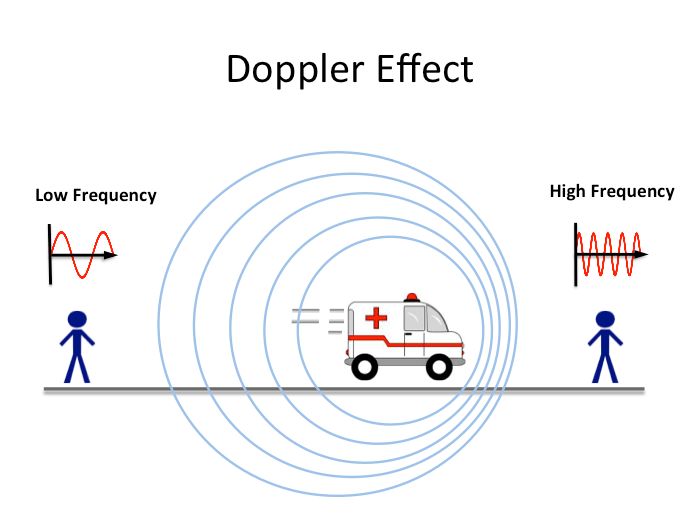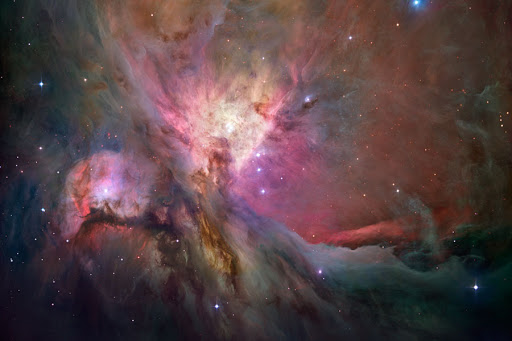
Meet the planetary nebula, one of the universe’s most gorgeous phenomena.
If you’ve ever looked through a telescope, you may have seen one of these before. Through a small telescope, one might look like a little planet—hence the name. But make no mistake, these nebulae have nothing to do with planets, and everything to do with stars.
Up until now, we’ve covered how stars form, evolve, and eventually meet their end. They form out of a giant molecular cloud, or GMC. Eventually one cloud fragments and the cores condense into multiple stars, forming a star cluster.
The star then evolves across the main sequence, runs out of hydrogen fuel, expands into a giant, and begins to fuse helium in its core, which causes the star to contract a little and get hotter.
Then, as the star runs out of helium fuel in its core, it expands into a giant a second time. This is the last time a medium-mass star will expand. It’s also the end of the line for the fuel in its core, since it can’t get hot enough to fuse carbon.
At this point, the star is so big that gravity at the surface is too weak to hold onto its atmosphere, especially in the face of the superwind of radiation pressure from the still-collapsing core.
The result is a planetary nebula…but what exactly is a planetary nebula? What is it made of? Why does it look the way it does?
A planetary nebula is literally the stuff that used to be the star’s atmosphere. And because stars are huge, planetary nebulae are huge—between 0.2 to 3 light-years in diameter.
I know—crazy, right? That’s waaaaay bigger than a star. It just goes to show how powerful the winds are that force the star’s gases outward.
In order to get a better idea of what these objects are made of, let’s look at a sample spectrum.
Remember from previous posts that spectra show astronomers what an object is made of, and depending on the type of spectrum, we can also tell a lot more about it—like its temperature. For example, stars of different temperatures (represented below by their spectral class on the left hand side) have very different spectra:

So, here’s a spectrum from a planetary nebula:

Notice that this spectrum—like the one above—has gaps were colors are missing. But instead of those gaps being dark lines on the rainbow, like the one above, the colors themselves are the lines. If you were seeing these two different spectra on a black background, they would look something like this:

The stellar spectra above are absorption spectra. The spectrum from the planetary nebula is an emission spectrum. (It’s pretty rare, if not impossible, to get a continuous spectrum from a cosmic object.)
So, what does a planetary nebula’s emission spectrum tell us about the object?
Well, for one thing, emission spectra in general are produced by excited gas—that is, hot, ionized gas. The specific lines of color on an emission spectrum also tell us that the planetary nebula—specifically the sample one I’ve grabbed—is composed of hydrogen, helium, and oxygen.
That makes perfect sense. Based on what we know about stellar evolution, that should be the composition of a medium-mass star’s atmosphere.
So, we’ve got hydrogen, helium, and oxygen that’s hot enough to emit its own light and show up on an emission spectrum (as opposed to us just getting blackness). But that’s not all the spectrum can tell us.
Meet the Doppler shift.

I’ve written about the Doppler shift before, but I’ll revisit it here. Essentially, astronomers can use the Doppler effect to tell if something is moving towards or away from Earth. It’s actually very similar to listening for an approaching police or ambulance siren. How do you tell if a siren is coming towards you?
If you said its pitch gets louder, you’re absolutely right. And the opposite happens if it’s moving away from you: its pitch fades away.
Now, light doesn’t have pitch, per se, but light exists as waves same as sound. They’re slightly different in that sound waves must travel through something with mass (hence no sound in space) and light waves can travel anywhere, but the principle of the Doppler effect holds.
So what does a “pitch” change look like with light?

Well, as the image above shows…spectral lines actually get shifted. This can work for absorption lines or emission lines; the principle is the same. If an object is moving towards Earth, the data astronomers collect gets blueshifted—in other words, the spectral lines get shifted towards the blue end of the spectrum, but remain exactly the same distances apart from one another.
And what happens if an object is moving away from Earth? Yup, you guessed it—the opposite happens! Data is redshifted, meaning that the spectral lines get shifted towards the red end of the spectrum, all the while remaining exactly the same distances apart from one another.
The Doppler effect is a powerful tool. It’s how we can tell that variable stars expand and contract—their surfaces oscillate towards and away from Earth. It’s also how we can tell that planetary nebulae expand outward.
Here’s something important. Blueshift and redshift are measurable, meaning that you can actually tell how fast something has moved. From this information, we can tell that planetary nebulae are currently expanding at 10-20 kilometers per second.
So…how exactly do these nebulae actually come to look the way they do?

Meet one of my favorite planetary nebulae, the Ring Nebula. This one does indeed look like a little blue planet through a small telescope, so the name “planetary nebula” makes sense.
The model astronomers have for how planetary nebulae form is exactly that: a model. It’s imperfect and doesn’t account for the irregularities and asymmetries that seem to be the norm rather than the exception with these nebulae.
What it does explain is the two general phases of planetary nebula formation that are apparent from observations. First a slow wind from a red giant star blows away the cool, outer layers of the star—just as we’ve covered. But then, a fast wind from the hot, inner layers of the star overtakes it and compresses it like a snowplow.
The result: the gases are excited to produce their own light, and we see a nebula.
But…why are they so asymmetrical, anyway?
Well, we have to remember that space isn’t just stars and blackness. When stars produce planetary nebulae, they aren’t blowing off their outer layers into a void. This is the stuff that surrounds them, often invisible to us because it’s not hot enough to light up on its own.

Space is full of the interstellar medium, something we’ve explored in depth before. It’s made of cool clouds, clouds of ionized hydrogen, coronal gas, and the giant molecular clouds from which stars form. I’ve spent several posts delving into the delicate equilibrium these pockets of gas maintain, even with different densities and temperatures.
Sometimes, when a planetary nebula like the Cat’s Eye Nebula forms, the gas that’s illuminated for us to see might not be just the gas that came from the star. Bubbles in the interstellar medium might also be inflated.

Planetary nebulae must be relatively short-lived phenomena. After all, they are not stars. They are an effect of radiation pushing outward from a source—a source that is almost exhausted. They can’t survive for long on an astronomical timescale. So…how come there are so many?
The sheer number of planetary nebulae out there, despite the short period of time that they last, indicates that they must be a very common phenomenon.
Think about it: they don’t last long, but before one fades, another is created, and another, and another. And none of those last long, but then more form, and more, and more, and more…
The long story short: planetary nebulae must be a very common end for a star to meet. And what we understand about the population of stars in the universe corroborates that. Planetary nebulae are the end of medium-mass stars (and supposedly low-mass stars as well, though none have yet died), and together, those two types of stars are by far the most common.
Now, there’s one part of the planetary nebula equation that we haven’t explored yet…and that’s where the heck that fast wind I mentioned comes from.
But that’s a story for another day…in my next post!
Planetaries have a range of dynamics which makes them all the more interesting!
Two questions, Emma:
1. Do planetaries only ever consist of hydrogen, helium and oxygen or can other gases be in the mix too?
2. If other gases are present, are they most likely to come from the host star or the interstellar medium?
LikeLiked by 1 person
Great questions!
I’m honestly not sure. I did a quick internet search, and it seems—as I expected—other elements and even dust can indeed be present in planetaries. Based on my understanding of stellar evolution, carbon and other relatively light elements found in the nebula might be from the host star, but I would suspect that heavier elements and dust would have been swept up from the interstellar medium. I could be wrong, though—or not entirely right.
LikeLiked by 1 person
Thanks very much for your honest response, Emma.
Every planetary is different visually and I can only assume that this is because the initial conditions vary somewhat, including both in the star and the in the surrounding galactic environment. I thought I had read somewhere that nitrogen is found in them but I’m not sure where I read it. So I might be not entirely right too.
I learn a lot from your posts and I really hope that you can maintain the energy and inclination to keep it going. It must take up a lot of your time. 🙂
Best regards,
Roger
LikeLiked by 1 person